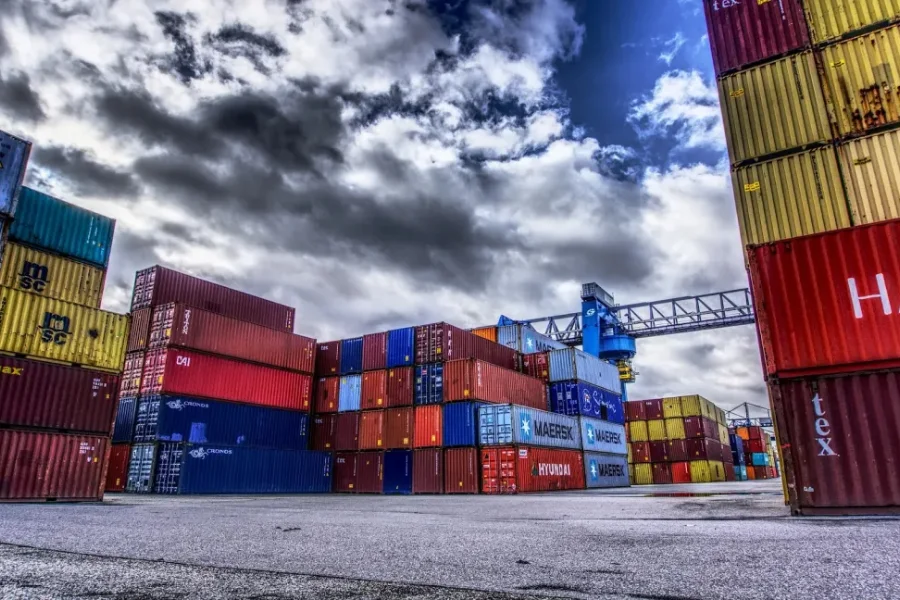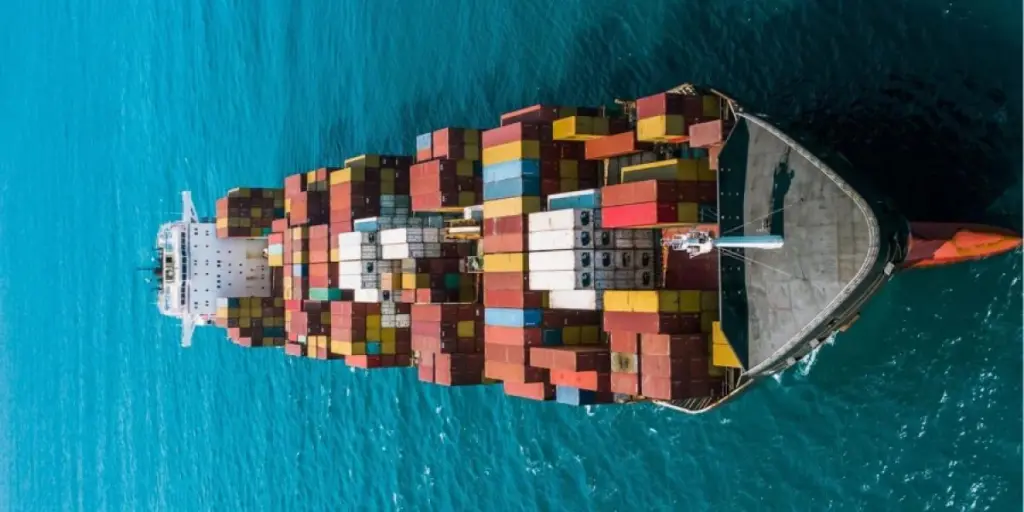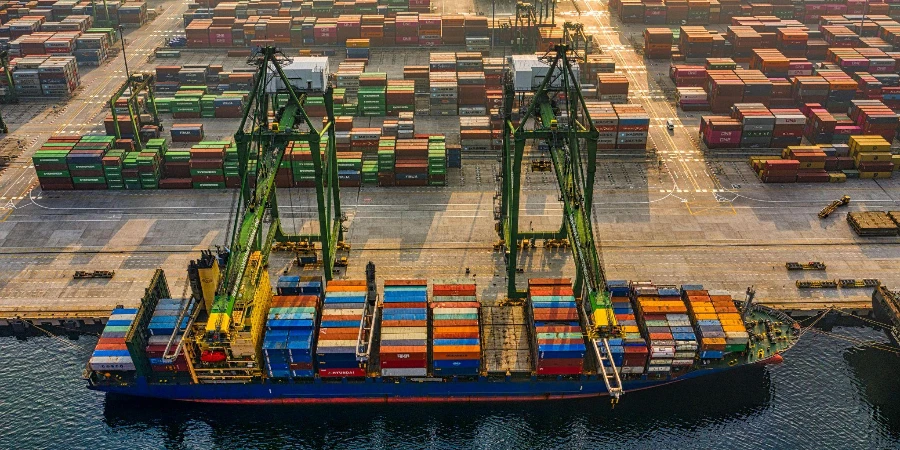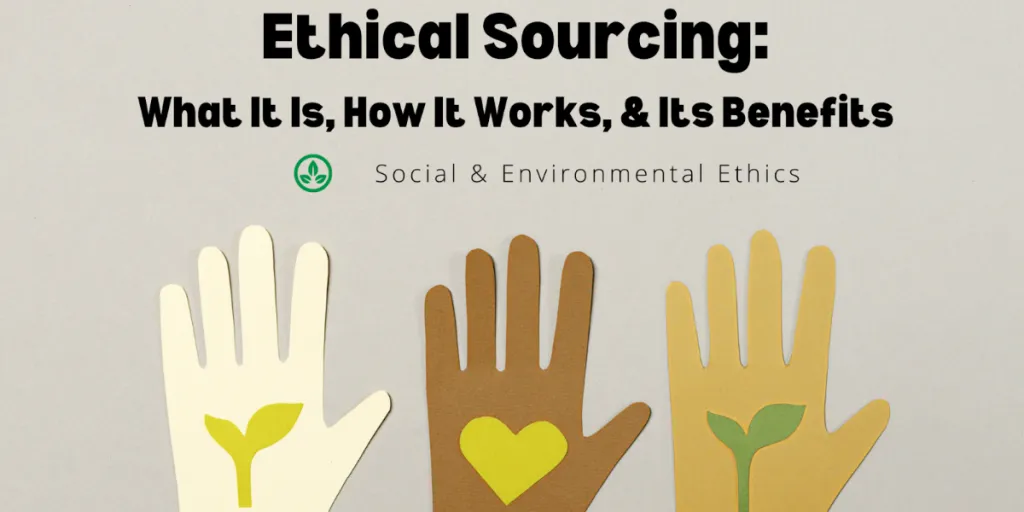Aside from the European Union, the United States has been ranked as the world’s largest single-country importer for many consecutive years now. And there are no signs of this trend slowing down now, as according to the latest trade statistics from the U.S. Customs and Border Protection (CBP), the total import value of goods into the United States has steadily increased since 2020, reaching $3.35 trillion in 2022, representing a more than 35% increase since then.
All of these statistics demonstrate the significance of imports to the US economy and the reliance of the commercial sector on imports. In this article, let’s get a closer look at the overall US import process, the crucial stakeholders and steps involved, the common issues found in the US import procedure as well as how to steer clear of these potential pitfalls for successful imports.
Table of Contents
Crucial stakeholders and their roles in the import process
Steps involved in the US import process
Common issues in the US import process
Tips for avoiding common issues and ensuring a smooth import process
Key takeaways for successful US imports
Crucial stakeholders and their roles in the import process

Aside from the importers themselves, the major stakeholders involved in the US import process to ensure a seamless movement of goods across the US international borders can be divided into the following two main categories:
Regulatory agencies
- The U.S. Customs and Border Protection (CBP) is the main government agency in charge of enforcing customs legislation and regulations in the United States. It plays a critical role in the US import process by inspecting and clearing goods entering the country, collecting duties, taxes, and fees on imported merchandise, and ensuring compliance with all import requirements. Beyond these major roles, CBP also collaborates with other government agencies to support legal trade and safeguard consumers from restricted goods. It provides importers advice on rules and makes judgments on whether the goods are properly classified and valued so that the relevant duties and taxes may be collected.
- Several other government agencies are also involved in the US import process to guarantee the security, conformity, and control of imported goods. Food, pharmaceuticals, medical equipment, cosmetics, and other items are under the U.S. Food and Drug Administration (FDA) regulations. The Environmental Protection Agency (EPA), on the other hand, regulates substances, pesticides, and goods that pose a threat to the environment or public health. The U.S. Department of Agriculture (USDA) regulates agricultural products, including food, animals, and plants. Meanwhile, trade laws and export restrictions on goods or technologies with possible military uses are enforced by the U.S. Department of Commerce (DOC). Importers must adhere to the respective agency’s guidelines to ensure a safe, lawful importation.
Logistics and supply chain providers
- Customs Brokers: Given their expertise as licensed professionals who guide importers through the complexities of customs laws and regulations, customs brokers assist in making sure that the correct import information is declared to Customs and applicable duties and taxes are paid, which in turn prevents any potential legal implications or shipment delays.
- Carriers: Working as the parties who are responsible for physically moving the goods from the origin to the destination, carriers help to ensure that the goods reach their destination in a safe and timely manner, by offering a range of transportation options, including sea, air, rail, and road. Without carriers, shipping goods would be virtually impossible.
- Freight Forwarders: In their capacity as the logistics providers who organize the shipping of products and typically engage with various carriers on behalf of the importers/shippers, freight forwarders provide a range of services that make the import process smoother. These services included documentation, tracking, insurance, and consolidation of shipments. However, for the actual shipping and customs clearance activities, which are specialized tasks handled by carriers and customs brokers respectively, the role of freight forwarders can occasionally overlap with both of them.
- Warehousing and Distribution: These services such as bonded warehouses, fulfillment centers, and distribution centers can be instrumental typically after the goods have already been cleared through customs (and hence imported). Various services are provided on top of their main functions for storing and distributing imported goods, including inventory management, order fulfillment, and transportation coordination. The goal is to help importers optimize their logistics operations and meet customer demands.
Steps involved in the US import process

Before we embark on an in-depth exploration of the stages and steps involved in the US import process here, it is crucial to be aware that the import procedure can vary slightly depending on a number of factors, including the type of goods being imported, the origin and destination countries, any particular regulations in force at the time of import, and the terms of the contract between the importer and exporter. Nevertheless, since the following stages and related steps cover the fundamental aspects of the import process, they are generally relevant to the great majority of import situations.
Establishing the import process framework
The pre-import stage involves establishing the groundwork to initiate the import process, which includes identifying and selecting a reliable supplier. The supplier selection process is crucial, as it determines the quality of the goods, their cost, and delivery time. After selecting the supplier, the importer negotiates terms, secures foreign exchange, and signs a contract. The last step in this stage typically ends with the dispatch of a Letter of Credit or other payment method that serves as a guarantee of payment from the importer’s bank to the exporter’s bank.
Ensuring regulatory compliance and security
This initiation stage involves making sure that all necessary import permits, licenses, and/or any regulatory compliance requirements are in place, which varies depending on the type of goods being imported. For example, certain imports regulated under the FDA may be subject to specific compliance requirements such as a Premarket Notification 510(k) submission to the FDA for medical devices introduced for the first time or after significant changes or modifications.
Meanwhile, the Importer Security Filing (ISF), which is also known as “10+2”, must also be complied with at this stage for any ocean vessel imports. Under the ISF rule, the importers or their agents must provide certain cargo information to the CBP at least 24 hours before the cargo is loaded onto an ocean vessel bound for the United States.
When the value of the commercial goods being imported is over $2,500, the CBP will also request a customs bond, which serves as a guarantee that the importer will pay all taxes, duties and fees owed to the federal government. If the goods are subject to the regulations of other federal agencies, such as those set forth by the U.S. Department of Commerce (DOC), a customs bond may still be necessary regardless of their value, i.e., including for shipments valued under $2,500.
Arranging transportation and managing logistics
The main goal of this transit stage is to organize physical transportation and shipping arrangements for the goods. This involves working with freight forwarders and carriers to ensure that the goods are safely transported from the origin to the U.S. port of entry.
A freight forwarder or carrier may arrange to safely ship the goods from the origin to the U.S. port of entry via various transportation modes available. The shipping should include cargo insurance and shipment tracking, with water transport being the primary mode in line with its cost-effectiveness and high capacity.
The importer or their agent needs to prepare and submit a variety of entry documents such as the commercial invoice, packing list, bill of lading, certificate of origin, etc. These vital documents which contain necessary details about the shipment, including the description, value, and origin of the goods can be submitted directly to the CBP or through a licensed customs broker, who handles the submission on behalf of the importer.
Managing customs clearance and payment
The customs clearance stage begins upon the arrival of the goods at a U.S. port of entry. The goods may be subjected to a customs inspection before being released. After fulfilling all inspection and documentation criteria, CBP may grant a “conditional release” of the goods. The importer then needs to complete the filing of CBP Form 7501 electronically using the Automated Commercial Environment (ACE) system within 10 working days of the release date and pay any duties, taxes, or fees owed to secure the final release of the goods.
The CBP Form 7501 is a compulsory summary entry that must be submitted by importers of dutiable goods into the United States. It captures crucial information such as the importer and consignee’s identity, the country of origin, the HTS code, the quantity, the value, and the duty and tax computations.
In the event that the CBP does not grant a “conditional release,” the goods will be held at the port of entry. The importer will need to resolve any issues leading to this decision, which could include incomplete or incorrect documentation, suspicion of illegal activities, and a few other common issues explained in the next section. If the issues are resolved, the importer will need to go back to completing the CBP Form 7501 and paying the dues. The importers must resolve the issues within a specific timeframe, or the goods may be seized or destroyed.
After the goods are cleared by customs, the next-to-last step is to arrange for the transportation of the goods from the port of entry to the final destination and then retrieve the goods at a pre-agreed location with the shipper.
Finally, the conclusion of the entire US import process takes place when the import entry is “liquidated”. Liquidation entails the final determination by CBP of import admissibility, as well as calculation of import duties, taxes, fees on entries and/or drawback entries. The liquidation of an entry typically occurs within 314 days of the entry date, before which an importer can apply for Post Entry Amendments. After that, any request to modify entry information can only be submitted by way of a Protest to CBP.
Common issues in the US import process
The more than 10 steps required in the US import process listed in the previous section demonstrated how complex and challenging it may be for new or inexperienced importers. Here are the common issues that importers may encounter during the process, with practical hypothetical scenarios provided to enhance understanding of their nature and impact.
- Delays due to incomplete or inaccurate documentation: This is one of the most common issues that can cause significant delays in the import process. This issue involves any inaccuracies or omissions in the documentation or information needed for the shipment, such as shipping details, permits, licenses, certificates, or HS codes.
In order for the CBP and other authorities to verify the importer’s identity, the product’s origin and value, classification and tariff rate, as well as any potential limitations on the items, importers must provide accurate and thorough information on a variety of documents. Commercial invoices, packing lists, bills of lading, certificates of origin, and entry forms are a few examples of them.
Realistic hypothetical scenario: An importer is bringing wine from France but neglects to provide the necessary Alcohol and Tobacco Tax and Trade Bureau (TTB) permits. This could cause the shipment to be held at Customs and subsequently increase costs for storage, demurrage, or inspection fees.
- Non-compliance with other government agency requirements: Besides CBP, importations for certain types of goods may require adherence to regulations from other government agencies cited in the first section of this article. Each of these agencies may impose specific requirements or restrictions on the importation of products such as food, drugs, cosmetics, chemicals, vehicles, etc products under their respective jurisdictions.
Realistic hypothetical scenarios: Compliance with Environmental Protection Agency (EPA) regulations are required when importing cars. If these are not met, the cars could be held at customs or even seized by the government. In addition, non-compliant cars may also face fines, recalls, or even legal action.
- Customs holds and inspections: CBP retains full authority to hold and inspect shipments for a variety of reasons, including routine inspections, security issues, or problems with compliance or safety. These inspections may result in delays and incur additional expenses. At the same time, CBP may also hold shipments for examinations by other pertinent government agencies. The choice to examine shipments is made in accordance with risk analysis, random selection, targeted standards, or intelligence data.
Realistic hypothetical scenarios: A shipment could be detained for a VACIS (Vehicle and Cargo Inspection System) inspection, which produces an image of the shipment’s contents using gamma-ray technology. If any non-compliance concerns are found during the inspection, this might slow down the import process and result in extra charges. The cargo may also be subject to fines or confiscation by Customs if there are any restricted items or undeclared goods present.
- Tariff classification errors: The Harmonized System (HS) code is assigned to every product imported into the United States. This code not only determines the tariff rate, but has other import implications as well, such as admissibility, quota and trade statistics. Misclassifications can result in improper duty payments, fines, delays in shipments, or possibly the CBP seizing the said products for breaking trade regulations. These codes are essential for identifying the appropriate duties and limitations as they are internationally standardized. Incorrect classification may lead to delays or rejections of requests for special treatment under free trade agreements or other schemes.
Realistic hypothetical scenarios: An importer is bringing in bicycles but mis-classified them under the code for bicycle parts. This mistake could result in the underpayment of duties, fines, and a delay in the clearance of the goods.
Tips for avoiding common issues and ensuring a smooth import process

To avoid common issues that importers may encounter during the US import process, proper preparations and planning, and seeking expert assistance when necessary are crucial. The following tips can be used as a starting point to ensure a smoother and less error-prone import process.
- Understanding tariff classifications and applicable duties: This is a key component of the import process. To ensure accuracy, importers should take advantage of resources such as the Harmonized Tariff Schedule of the United States (HTSUS) to identify the most appropriate code for their products. For further clarity, importers can also utilize online tools such as the Customs Rulings Online Search System (CROSS) to gain access to previous rulings or decisions by CBP on similar products. If uncertainties persist, importers may also take a proactive approach by requesting a binding ruling from CBP directly.
- Ensuring documentation accuracy and completeness: A seamless import process is highly dependent on accurate and thorough documentation. To achieve this, importers can refer to CBP’s online 7501 form as a helpful resource for understanding the necessary data elements to be declared and preparing them in advance. In the meantime, Importers should also ensure that they provide precise and consistent information regarding the goods’ value, quantity, weight, and dimensions on all documents. Precision and attention to detail are key here, any changes should be reviewed and updated accordingly before any documents submissions.
- Ensuring compliance with other government agency requirements: Before importing their products, importers must conduct the necessary research to identify the unique requirements of the relevant government agencies related to their importing goods. A sufficient understanding of the particular requirements is paramount in securing the required permits, licenses, approvals, or any related compliance documentation from the pertinent government agencies.
The importers may also make full use of the Automated Commercial Environment (ACE) system to ensure the accuracy and completeness of the information submitted. Moreover, importers should prioritize maintaining clear and transparent communication with these agencies to establish a good rapport and to get timely assistance to resolve any potential issues that may arise. Retaining documentation for a period of 5 years is also a regulatory requirement, and supports the importer’s claims in the case of a post-entry audit.
- Working with a licensed customs broker or freight forwarder: These professionals can significantly ease the import process. They can practically provide solutions for all the common issues mentioned above, including tariff classification and duty calculation, preparation and filing of entry documents, navigating the requirements and restrictions of various government agencies, and perhaps most significantly- communicating with CBP for a smoother customs clearance process.
Importers should provide their brokers with accurate and complete information on their products and documents to ensure seamless communication with CBP and other government agencies. Indeed, CBP acknowledges the invaluable support that licensed customs brokers may provide to first-time importers as they navigate the intricacies of the import process. CBP offers information such as a list of licensed customs brokers for particular ports to assist importers in making informed choices. Even though not mandatory, engaging a customs broker is an increasingly popular way to speed up the import procedure.
- Staying informed about changes in import regulations: Lastly, being proactive, informed, and diligent are the foundations to achieving seamless and successful U.S. imports. It is advantageous to stay up to date with updates to the rules issued by the related governmental agencies. Such a proactive strategy can help importers stay compliant, prevent unanticipated delays, and facilitate a smooth and efficient import process.
Key takeaways for successful US imports
To properly conduct importation into the US, many important considerations are involved. Firstly, it is essential to gain a good understanding of all parties involved, from regulatory agencies to logistics and supply chain providers. The process is intricate and includes establishing the import process framework, ensuring regulatory compliance and security, arranging transportation and logistics as well as proficiently managing import documentation and payment. It’s also crucial to be aware of any potential issues that could occur throughout the importation process, such as delays brought on by incomplete or inaccurate documentation, non-compliance with other government agency requirements, possible customs holds and inspections, and errors in tariff classification.
Effective strategies to mitigate these issues include understanding and applying appropriate duties and tariff classifications, ensuring the accuracy and completeness of all paperwork, complying with other government agency requirements, and collaborating with a freight forwarder or customs broker while also staying informed about changes to import restrictions. To stay ahead of the game and explore more about logistics, don’t miss out on the plethora of information, regular updates, and in-depth insights available at Alibaba Reads. Your journey to becoming a master of logistics and wholesale business opportunities begins here.

Looking for a logistics solution with competitive pricing, full visibility, and readily accessible customer support? Check out the Alibaba.com Logistics Marketplace today.




